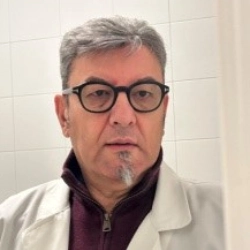
Mariano Rillo
Carlo Fiorino Hospital, ItalyTitle: How to identify atrial fibrosis in patients with persistent atrial fibrillation
Abstract
RF ablation has been shown to be an effective treatment for atrial fibrillation (AF). Paroxysmal AF may be successfully treated isolating pulmonary veins, while persistent AF is mostly associated with triggers and mechanisms localized both at the level of the pulmonary veins and in other anatomical regions of the left atrium. Atrial fibrosis plays an important role in the genesis and perpetuation of AF, especially if persistent. Detection of atrial fibrosis by imaging modalities is challenging and suboptimal for the detection of scars in thin wall atria, resulting in center-to-center non-reproducibility. Endocardial voltage mapping by acquiring thousands of voltage points has been increasingly used in clinical practice for defining AF substrates. Indeed, in several studies conducted during RF ablation procedures identification of left atrial anatomical areas of low-voltage electrical activity (LVZs), is commonly considered a surrogate marker of atrial fibrosis. These maps, however, may vary according to the catheters and 3d systems used. The approach has limitations because while the terms “low voltage” and “scar/fibrosis” are used interchangeably, there is a fundamental difference between these 2 terms and voltage amplitude should not be used as a reference to quantify myocardial tissue fibrosis. Furthermore, activation direction, electrode spacing, electrode size, filter settings, point density, and tissue contact are all factors that potentially influence HD maps. In particular the relationship between the orientation of the recording bipole and the wave-front bipole may influence the arrival time of the activating wave-front at each electrode; this can mean that electrical signals may not be recorded even when they are present [5] bringing out false LVZs. A solution to this problem may be provided by a new mapping technique, known as omnipolar mapping. We report our experience with this new approach in identifying atrial fibrosis to propose a “tailored ablation” in patients with persistent AF.
Biography
Mariano Rillo has developed his electrophysiology skills in important Italian centers including the San Raffaele Hospital in Milan. He was head of EP Lab at Poliambulanza Center in Brescia and of EP Lab at Villa Verde Clinic in Taranto. He was EP consultant in numerous public and private hospitals in Italy for several years. He currently is chief of Cardiology at Carlo Fiorino Hospital in Taranto and EP Consultant in different Hospital of Neuromed Group in Italy. He have many publications on reputed journals and parteciped at several national and international Congress as speaker.

